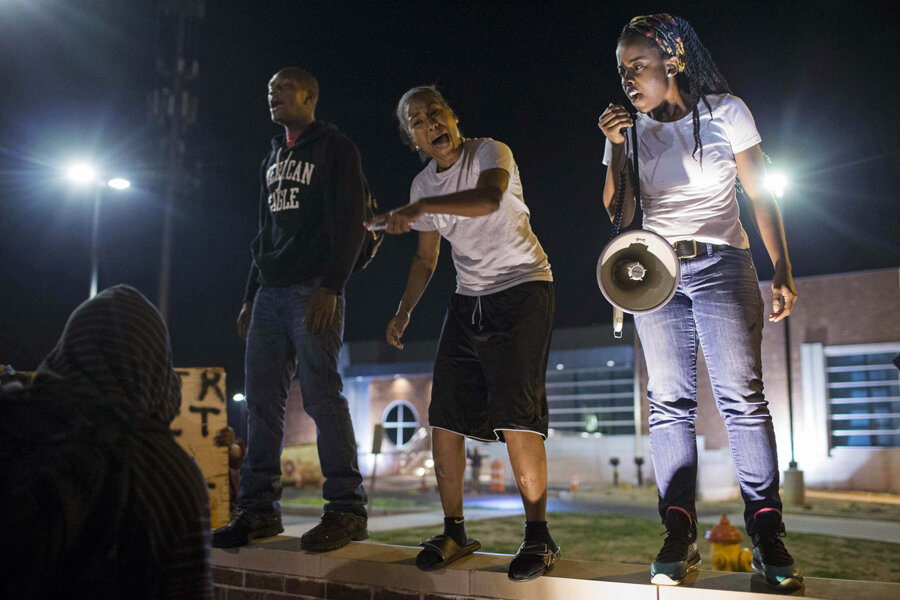Ferguson's ballot box protest: voter registration up 25 percent since shooting
Loading...
After fiery protests in the wake of the death of Michael Brown, residents of Ferguson, Mo., are preparing to raise their voices in another way: They're registering to vote.
A constant theme underlying the tensions surrounding the shooting of Mr. Brown centered on the fact that a large majority of Ferguson residents are black, while the city council and police department are overwhelmingly white. Brown, who was unarmed, was black, while the police officer who shot him is white.
One key factor in the racial divide between the governed and the governing was low voting rates. For example, this past April, when Ferguson’s white mayor, James Knowles, was reelected to a three-year term, only 1,484 ballots were cast – about 12 percent of registered voters at the time.
Since the Aug. 9 shooting, however, more than 3,000 people in the Missouri city of 21,000 have registered to vote. That represents a increase of more than 25 percent in voter registration in just two months. Total voters registered in Ferguson are now 14,428 as of mid-day Thursday, and still rising, according to the St. Louis County Board of Elections.
The rise in registrations is a sign that outrage spawned by Mr. Brown’s death – and by an initial police response to protests that was seen as callous and heavy handed – may be translating into civic engagement.
The protests on Ferguson’s streets have already resulted in some changes in Ferguson. The city council has announced plans for a civilian review board for the police, and Police Chief Tom Jackson has issued a public apology to the Brown family for the loss of their son, even as a grand jury is weighing possible criminal charges against the police officer who shot Brown.
“Protest is very important to shake up communities and mobilize electoral coalitions” that expand diversity in government, says Christine Marie Sierra, a University of New Mexico political scientist who focuses on issues of race, ethnicity, and gender in government. But she says minority empowerment in US cities typically hinges on electing new leaders “who will bring forward different perspectives and different policies.”
Although the November election doesn’t involve municipal offices, events in Ferguson have been playing a role in St. Louis County campaigns. And come April, some city council seats in Ferguson will come up for election.
The county has an Oct. 8 deadline for people to be eligible to vote on Nov. 4.
The new voter enrollments already push Ferguson well above the national average for registrations. In 2012, some 71 percent of voting-age American citizens were registered (and 62 percent voted). In Ferguson, the US Census Bureau finds nearly 29 percent of the population to be under 18, which means that more than 90 percent of the population is registered.






